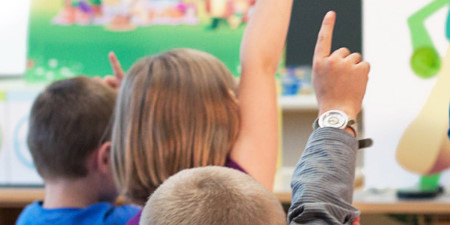 Teaching
Teaching

The DIYS projects as an effective approach to science and technology
The do-it-yourSciences platform deliberately limits itself to providing building instructions of projects illustrating scientific themes, generally in connection with sustainable development.
Although most teachers are aware that technical topics are of interest to young people, it is sometimes difficult for them to tackle these issues in an practical way without the need of highly specialized or expensive equipment.
The do-it-yourScience projets answer this difficulty and offer many advantages as they:
The best way to use the do-it-yourSciences projects is to include them as part of a teaching module in which they can be contextualized and linked to global environmental issues.
We assume that most teachers would know how to integrate this type of practical projects into their teaching. Nevertheless, we thought it would be useful to present an example of a teaching module. This is only an example which can be improved and adapted according to learning objectives and time available.
Example of a teaching module integrating a do-it-yourSciences project
A teacher may, for example, wish to illustrate a course on renewable energy by building with his pupils a device using solar energy.
We give below the main steps that such a course could contain:
How to use the do-it-yourScience projects in a school context?

The DIYS projects as an effective approach to science and technology
The do-it-yourSciences platform deliberately limits itself to providing building instructions of projects illustrating scientific themes, generally in connection with sustainable development.
Although most teachers are aware that technical topics are of interest to young people, it is sometimes difficult for them to tackle these issues in an practical way without the need of highly specialized or expensive equipment.
The do-it-yourScience projets answer this difficulty and offer many advantages as they:
- Are inexpensive and relatively easy to build.
- Provide a practical way of illustrating themes or theories presented in class.
- Are attractive for young people because they can create objects that "really work".
- Are reusable many times so children can experiment and validate theories.
- Leave space for creativity and can be improved in use or design.
- Enable young people become creators, builders, innovators, and critics of technology.
- Propose examples of innovative technical solutions which contribute to a more sustainable world. This sends a positive message, far from the prevailing defeatism or eco-anxiety.
- Are an opportunity to develop many cross-cutting skills (dexterity, understanding of instructions, calculations and logic, use of tools, precision, patience, and perseverance, etc.).
The best way to use the do-it-yourSciences projects is to include them as part of a teaching module in which they can be contextualized and linked to global environmental issues.
We assume that most teachers would know how to integrate this type of practical projects into their teaching. Nevertheless, we thought it would be useful to present an example of a teaching module. This is only an example which can be improved and adapted according to learning objectives and time available.
Example of a teaching module integrating a do-it-yourSciences project
A teacher may, for example, wish to illustrate a course on renewable energy by building with his pupils a device using solar energy.
We give below the main steps that such a course could contain:
| Name of the module : renewable energies and solar energy | |||
| Age of pupils: about 11-12 years old | |||
|
Learning objectives:
Following this module, the student should be able to:
|
|||
| What ? | How ? | Duration | |
| 1. Presentation of the main issues of energy use | Options : Both can be followed by a period of debriefing and debate. | 2-3 x 45 min. | |
| 2. Study of different renewable energies (potential, technologies, uses) |
|
4 x 45 min. | |
| 3. Creation functional solar modules and experimenting |
|
4 x 45 min. | |
| 4. Discovery of a local project | Visit of a photovoltaic and/or solar thermal installation near the school | 2 x 45 min. | |
| 5. Validation | Options : |
1 x 45 min.
Exhibition: Preparation : 1 x 45 min. Presentation to other classes : 4 x 45 min. |
|
| Total : 14 - 20 x 45 min. | |||


